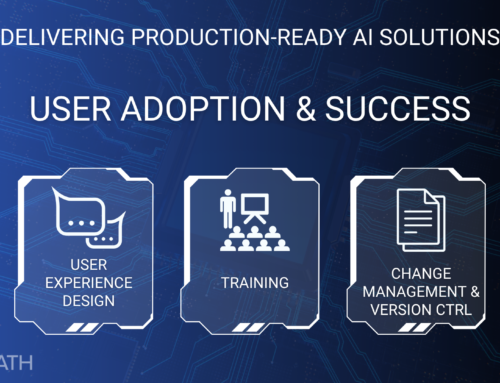When productionizing and operationalizing ML models in an enterprise environment, the following risks are particularly pronounced compared to other environments:
1. Compliance and Regulatory Risks
- Regulatory Compliance: Enterprises often operate in heavily regulated industries (e.g., finance, healthcare) where non-compliance with data protection, privacy, and industry-specific regulations can lead to severe penalties. For example, GDPR in the EU or HIPAA in the U.S. impose stringent requirements on data handling and model explainability.
- Auditing and Accountability: Enterprises may face legal obligations to provide audit trails for decision-making processes. Inadequate logging and monitoring can lead to non-compliance with these regulations, resulting in fines and reputational damage.
2. Scalability and Performance Risks
- Infrastructure Overload: Unlike smaller environments, enterprises need to scale their ML models to handle large volumes of data and high request rates. Inadequate scaling can lead to performance bottlenecks, downtime, or service degradation.
- Resource Allocation: Ensuring that the model-serving infrastructure can handle varying loads without over-provisioning (which increases costs) or under-provisioning (which impacts performance) is more challenging in a large enterprise.
3. Security Risks
- Data Security and Breaches: Enterprises handle sensitive and proprietary data, making them prime targets for cyberattacks. A breach could expose customer data, financial information, or intellectual property, leading to significant legal and financial consequences.
- Model Security: Models can be susceptible to adversarial attacks where malicious inputs cause the model to make incorrect predictions. In an enterprise setting, such attacks could lead to fraudulent activities, financial losses, or reputational damage.
4. Operational Complexity
- Cross-Departmental Coordination: Large enterprises typically involve multiple departments (e.g., IT, DevOps, legal, data science), each with different priorities and tools. Misalignment between these departments can lead to delays, integration issues, or failures in the deployment process.
- Change Management: Implementing updates or changes to the model or its deployment environment in a way that minimizes disruption to ongoing operations is more complex in an enterprise environment. Poor change management can lead to service outages or degraded performance.
5. Ethical and Reputational Risks
- Bias and Fairness: Enterprises must be vigilant about the ethical implications of their models, especially in areas like hiring, lending, or customer segmentation. Deploying biased models can lead to discrimination, regulatory action, and damage to the company's reputation.
- Public Scrutiny: Enterprises are often under greater public and media scrutiny. Any perceived misuse or failure of an ML model can lead to significant reputational harm, impacting customer trust and stock prices.
6. Dependency on Third-Party Services
- Vendor Lock-In: Enterprises often rely on third-party vendors for cloud services, data, or pre-trained models. Dependency on these vendors can lead to risks such as sudden price increases, service disruptions, or difficulties in migrating to a different provider.
- Third-Party Model Risks: Using external models or services that do not align perfectly with the enterprise's specific needs can introduce risks, such as poor performance or hidden biases, which can be difficult to identify until after deployment.
7. Cost Management Risks
- Unexpected Costs: In an enterprise setting, scaling ML models can incur significant costs related to cloud compute, storage, and ongoing maintenance. Without careful cost management, enterprises can face budget overruns or unanticipated expenses.
- Total Cost of Ownership (TCO): Enterprises need to consider the TCO of ML models, including development, deployment, maintenance, and potential model retraining. Inaccurate estimations can lead to financial risks and impact profitability.
8. Long-Term Maintenance and Drift
- Model and Concept Drift: In dynamic business environments, data patterns can change over time, leading to model or concept drift. In an enterprise, this can cause models to become less accurate, leading to poor decision-making and potential financial losses if not detected and managed promptly.
- Technical Debt: As models are updated or new models are deployed, enterprises risk accumulating technical debt if proper practices for versioning, documentation, and deprecation are not followed. This can lead to increased maintenance costs and reduced agility.
9. Legal and Contractual Risks
- Liability for Model Decisions: Enterprises may face legal risks if an ML model makes a decision that leads to financial loss, harm, or discrimination. This is particularly critical in sectors like finance, healthcare, and insurance, where decisions can have significant real-world consequences.
- Intellectual Property (IP) Risks: Protecting the IP associated with ML models, especially when using open-source tools or third-party components, is a significant risk. Unauthorized use or sharing of proprietary models can lead to legal disputes and financial losses.
10. Cultural and Organizational Risks
- Resistance to AI Adoption: In large organizations, there can be significant resistance to adopting AI and ML solutions, particularly if they disrupt established workflows or threaten jobs. This can slow down or even derail ML initiatives.
- Misalignment of Objectives: Different departments within an enterprise may have conflicting objectives, such as innovation versus stability. Misalignment can lead to suboptimal deployment strategies or the underutilization of ML capabilities.
In an enterprise environment, these risks require careful management through robust governance frameworks, strong cross-departmental collaboration, thorough testing, and ongoing monitoring to ensure that ML models deliver value while minimizing potential downsides.





